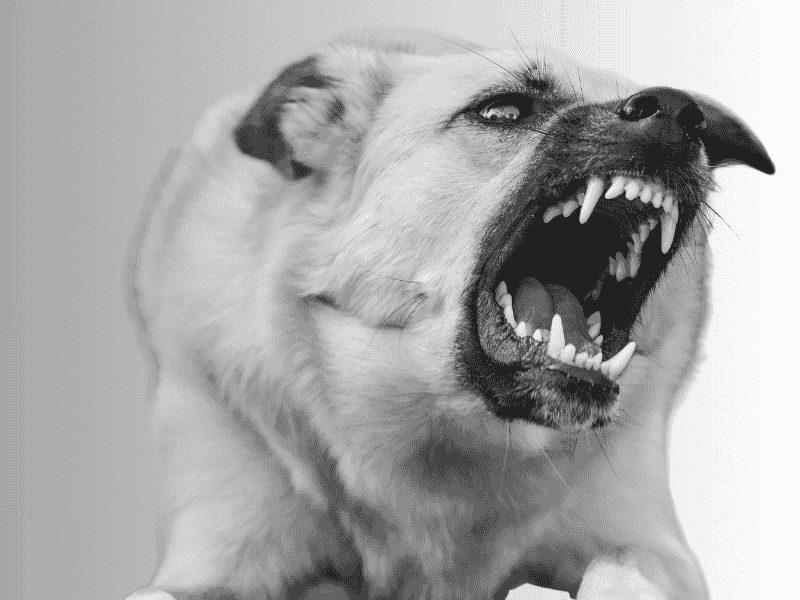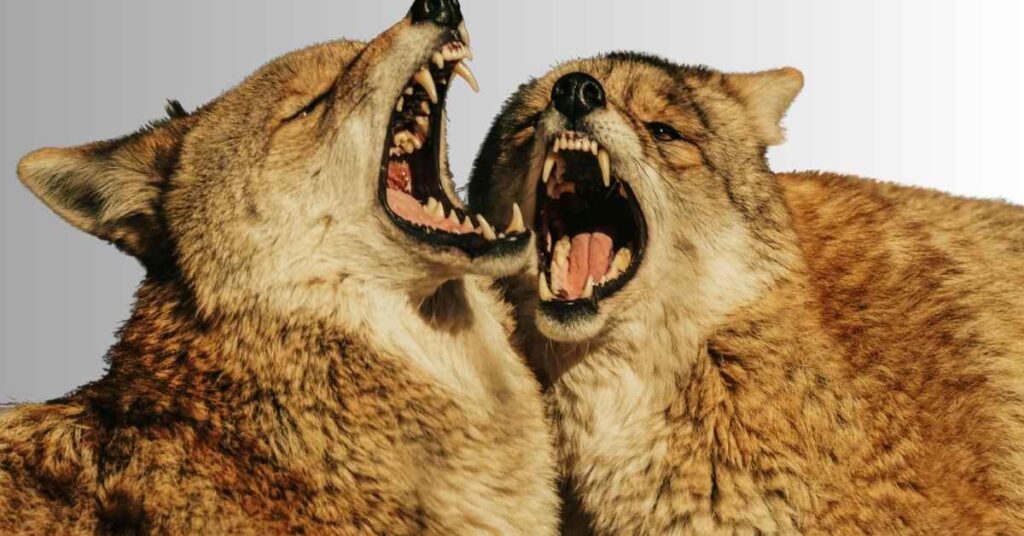Dog growling is a common behavior that often leaves pet owners questioning its meaning. Whether it’s a low growl during play or a warning growl in a tense situation, understanding why your dog growls is essential to fostering a positive relationship with your pet. Growling is a form of canine communication, and it serves as a way for dogs to express their emotions, intentions, and even set boundaries.
In this comprehensive guide, we’ll cover everything you need to know about dog growling—what it means, why it happens, and how to respond appropriately. Whether your dog is growling out of fear, excitement, or to communicate with other dogs, knowing how to interpret these signals can help you better understand their needs and behaviors. We’ll also dive into play growling vs. aggressive growling, how to handle growling in puppies, and what to do when your dog growls at you.
By the end of this guide, you’ll have the knowledge and confidence to interpret your dog’s growls and respond in a way that strengthens your bond and promotes good behavior.
What Is Dog Growling? Understanding the Basics
What Does a Dog Growl Mean?
A dog’s growl is a vocalization that serves as a form of communication. Dogs use growling to convey various emotions, including fear, anger, excitement, frustration, or to establish dominance. Depending on the situation and the dog’s emotional state, the sound itself may vary from a light, playful growl to a deep, aggressive growl. Understanding the context behind the growl is key to interpreting its meaning.

How Do Dogs Growl?
The act of growling is produced by the dog’s vocal cords, and it is often accompanied by body language. When a dog growls, they are using both vocalization and posture to send a message. A dog might stand tall with raised hackles, stiffened posture, or show its teeth while growling. The growl itself can range in tone, from a low rumble to a louder, more intense growl. Understanding the growl’s tone and the dog’s accompanying body language can help determine its meaning.
Different Types of Growls and Their Purposes
Play Growl: Typically short and light, often occurring during play with other dogs or humans.
Defensive Growl: A deeper, more intense growl used to signal that the dog feels threatened or wants to defend itself.
Aggressive Growl: This is usually low and menacing, signaling that the dog may be prepared to escalate the situation.
Fear Growl: A warning growl that indicates the dog is anxious or afraid of something, like unfamiliar people or objects.
Why Do Dogs Growl? Common Reasons Explained
Main Reasons Why Dogs Growl
Dogs growl for a variety of reasons, and understanding the root cause can help owners react appropriately. Some of the most common reasons for dog growling include:
Fear and Anxiety: Dogs often growl when they feel scared. If your dog is in an unfamiliar place, around new people, or exposed to loud noises, they may growl to show their discomfort. A growl in these situations is usually a warning to back off.
Territorial Behavior: Dogs can be protective of their territory, which could be your home, their favorite spot in the yard, or even a piece of food. If someone or something approaches what they consider their territory, they may growl to warn the intruder.
Resource Guarding: If a dog is possessive of something, like food, toys, or even a family member, they may growl to let others know they’re not willing to share. This type of growling can sometimes lead to more aggressive behavior if not addressed.
Pain or Discomfort: A dog in pain may growl to let you know they are uncomfortable. This can happen if you accidentally touch an injury, or if the dog is dealing with a chronic condition that causes discomfort.
Warning Signal: Dogs often growl as a way to warn others, both people and animals, that they need space. A growl is a signal that the dog is not happy with the current situation and wants it to change.
Why Does My Dog Growl at Me?
If your dog growls at you, it’s essential to determine the cause. Some dogs growl as a way to communicate their discomfort. Perhaps you’re in their personal space, or they’re feeling threatened by something you’re doing. It’s important to address the growl calmly and understand the context behind it.
Why Is My Dog Growling for No Reason?
Dogs don’t growl for no reason. Even if it seems like your dog is growling without a clear trigger, there’s always an underlying cause. It could be something subtle, like sensing a storm, hearing a noise you don’t notice, or feeling anxious without an obvious reason.
Why Does My Dog Growl at Other Dogs?
Growling at other dogs is a common behavior, especially when establishing dominance or boundaries. It can also occur if the dog feels territorial or is unsure about another dog’s behavior. Some growling is a natural part of dog communication and social dynamics, as dogs use it to establish their place within a group.
Why Does My Dog Growl at Strangers?
Growling at strangers is often linked to a dog’s protective instincts. If your dog perceives a person as a threat or feels that their family or territory is being invaded, they may growl to warn the stranger to stay away. This behavior is common among dogs that have not been socialized with unfamiliar people or environments.
Play Growling vs. Aggressive Growling: Knowing the Difference
Do Dogs Growl When Playing?
Yes, dogs often growl during play. Play growling is a normal and harmless part of how dogs interact with each other or their owners. Play growls are usually high-pitched and brief, signaling that the dog is excited and engaged in the fun.
Why Do Dogs Growl While Playing?
When dogs growl during play, it’s often a sign of excitement and engagement. It’s their way of expressing enjoyment, especially when they’re playing rough or engaging in a tug-of-war game. Play growling also helps dogs communicate with their playmates, setting the tone for the activity.
Signs of Healthy Play Behavior
If your dog is growling while playing, look for these signs to determine if it’s healthy behavior:
A wagging tail
Relaxed ears and posture
Frequent breaks and changes in play activity
These are all signs that the growling is part of a normal and healthy play session.
When Play Growling Becomes a Problem
While play growling is common, it can sometimes escalate if the play becomes too intense or the dog feels threatened. If the growling is accompanied by aggressive behavior, such as bared teeth, snapping, or chasing, it’s essential to intervene and stop the play session to prevent further escalation.
Puppy Growling: What New Dog Owners Need to Know
Is Puppy Growling Normal?
Yes, puppy growling is normal and expected as part of their development. Puppies will growl during play, exploration, and even while teething. Their growls might sound different than an adult dog’s, often higher-pitched and softer.
Why Is My Puppy Growling at Me?
Puppies may growl at their owners as they test boundaries or communicate needs. It’s important to remember that puppy growling is often playful or a way to express frustration. If the growling seems excessive or linked to fear, it’s essential to address the behavior early with gentle training.
Growling Puppy: When to Be Concerned
While puppy growling is generally harmless, excessive or persistent growling could signal a problem. If your puppy is growling in situations that seem unusual or is showing signs of aggression, it might be time to consult a professional trainer.
Specific Growling Situations and What They Mean
My Dog Growled at Me for the First Time
If your dog growls at you for the first time, it’s natural to feel concerned. The first step is to stay calm and assess the situation. Were you invading your dog’s personal space? Did something occur that might have made them uncomfortable? Understanding the trigger is important to handle the situation appropriately.
When a Dog Growls, What Does It Mean?
The meaning of a growl depends on the context. If your dog growls at you when you’re near their food, it may be a sign of resource guarding. If the growl occurs while you’re petting them, they could be feeling overstimulated or uncomfortable. Identifying the cause of the growl can help you respond in a way that reassures your dog and addresses the issue.
What to Do If Your Dog Growls at You
Immediate Response: What to Do When Your Dog Growls at You
When your dog growls at you, the first step is to remain calm. Never punish your dog for growling, as it’s a natural form of communication. Instead, back away slowly and give your dog space. If your dog is growling due to fear, discomfort, or pain, the situation will likely resolve once the trigger is removed.
What to Do If Your Dog Growls at You: Step-by-Step Guide
Stop what you’re doing: If you’re doing something that caused discomfort, stop immediately.
Give space: Back away slowly to give your dog room to calm down.
Observe the body language: Pay attention to your dog’s posture and facial expressions to gauge how they’re feeling.
Consult a professional: If the growling persists or you can’t identify the cause, consult a veterinarian or dog trainer for advice.
How to Stop a Dog from Growling
Should You Stop Dog Growling?
In most cases, it’s important not to suppress a dog’s growl. Growling is a warning signal that your dog is expressing discomfort or setting boundaries. Instead of trying to stop the growl, focus on addressing the underlying cause.
How to Stop Dog Growling at People or Other Dogs
To stop a dog from growling at others, focus on proper socialization. Gradual exposure to new people, dogs, and situations can help reduce anxiety or territorial behavior. Reward-based training and positive reinforcement can also help modify the behavior.
How to Stop Dog Growling at Family Members
Growling at family members can indicate boundary issues or fear. Training consistency, respect for the dog’s space, and using positive reinforcement techniques can help reduce this behavior over time.
When Dog Growling Becomes a Concern
Warning Signs of Problematic Growling
If your dog’s growling becomes more frequent, intense, or unpredictable, it could indicate a deeper issue, such as aggression or health problems. Growling that escalates into snapping or biting should be addressed by a professional trainer or behaviorist.
When to Seek Professional Help
If you’re unsure why your dog is growling or if the behavior becomes unmanageable, it’s time to consult a certified dog behaviorist or veterinarian. They can assess the situation and recommend the best course of action.
Conclusion
Dog growling is a natural and important form of communication. Understanding why your dog growls and how to interpret these sounds can lead to better behavior management and a stronger bond between you and your pet. Whether it’s playful growling or a more serious warning, knowing how to respond to each situation is essential for maintaining a harmonious relationship with your dog.
By understanding the reasons behind your dog’s growls and addressing them properly, you can reduce anxiety, stress, and unwanted behaviors. With patience, training, and consistency, you’ll be able to manage growling and ensure that your dog feels safe, comfortable, and understood.
FAQ Section
Q: Why does my dog growl at me for no reason?
A: There’s always a reason behind a dog’s growl, whether it’s fear, discomfort, or a hidden trigger.
Q: Is it normal for dogs to growl when playing?
A: Yes! Dogs often growl during play as a way to communicate excitement or engagement.
Q: What should I do when my dog growls at me?
A: Stay calm, give space, and assess the trigger. Never punish your dog for growling.
Q: Why is my puppy growling at me?
A: Puppies may growl as part of their learning process, especially when testing boundaries.
Q: How can I tell if my dog’s growling is serious?
A: Pay attention to the growl’s intensity, frequency, and accompanying body language. If it seems aggressive or excessive, consult a professional.
Q: Should I punish my dog for growling?
A: No, never punish a dog for growling. It’s a form of communication, not an act of aggression.
Q: Why does my dog growl at strangers but not me?
A: This is typically due to protective instincts. Your dog may feel the need to guard its family or territory from unfamiliar people.
Q: Can growling mean my dog is happy?
A: Yes! Dogs can growl when they’re excited and happy, especially during playtime.

